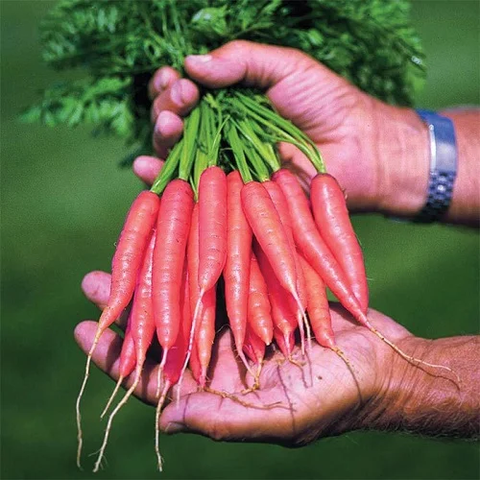Pink carrots are a captivating twist on the classic orange variety, offering a burst of flavor and a pop of color to your culinary creations. Here's everything you need to know about these unique carrots, from their origins to the best varieties to grow, along with some quick tips for successful cultivation.
What Are Pink Carrots?
Pink carrots are a distinct carrot variety known for their pinkish hue on the outer skin or inner flesh, making them a visual delight in the garden and on your plate.

How Do Pink Carrots Get Their Coloring?
The captivating pink color of these carrots comes from anthocyanin pigments, which have antioxidant properties. These pigments are found in the root, giving it its charming pink hue.
Are Pink Carrots Man-Made or Natural?
Pink carrots have a natural history dating back to the origins of carrots. They are not the result of recent human intervention but are part of nature's diverse range of carrot colors.
Best Pink Carrot Varieties
Atomic Red Carrot: Despite its name, it has a pinkish-red color when harvested early and a slightly spicy flavor, rich in lycopene.

Nutri-Red Carrot: With a reddish-pink exterior and interior, it's bred for high beta-carotene content and has a slightly earthy, sweet flavor.

Cosmic Purple: Known for its deep purple skin and pinkish flesh, it offers a sweet, spicy flavor.
Malbec: This unique pink carrot has a pinkish-purple exterior and a pink core, known for its vibrant color and sweet flavor.
Quick Tips for Growing Pink Carrots
Soil Preparation: Opt for well-draining soil with a pH of 6.0 to 6.8, avoiding heavy or clay soils.
Planting: Plant seeds 1/4 inch deep, spacing them 2-3 inches apart in rows.
Watering: Keep the soil moist during germination, and water consistently but avoid over-saturation.
Maintenance: Thin out seedlings when they reach 2 inches in height and control weeds to ensure proper growth.
Harvesting: Pink carrots are ready in 2-3 months; harvest by gently loosening the soil around the root.
Additional Tips
Protect your pink carrots from pests like carrot flies with bug nets or row coverings.
Consider crop rotation to reduce the risk of disease in your garden.
Growing pink carrots is not only visually appealing but also adds a unique flavor and nutritional dimension to your garden and meals. Give these vibrant veggies a try in your home garden for a delightful twist on a classic favorite.









